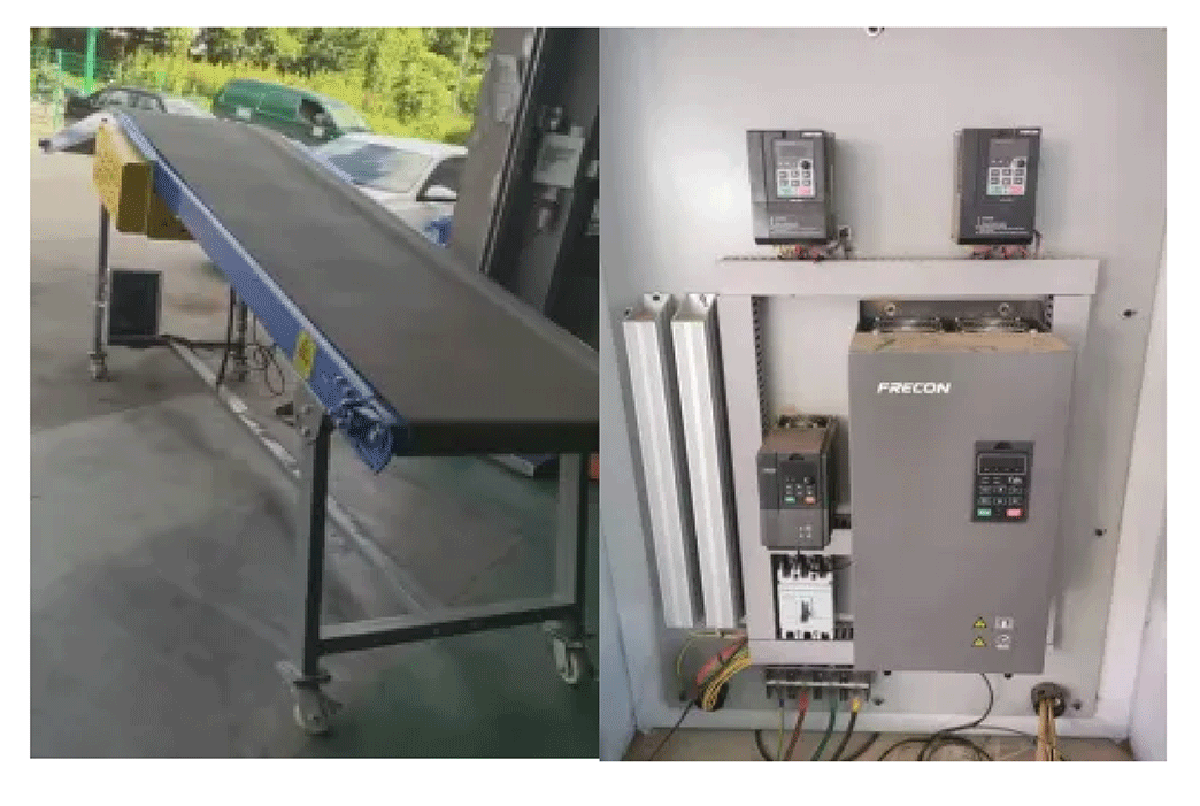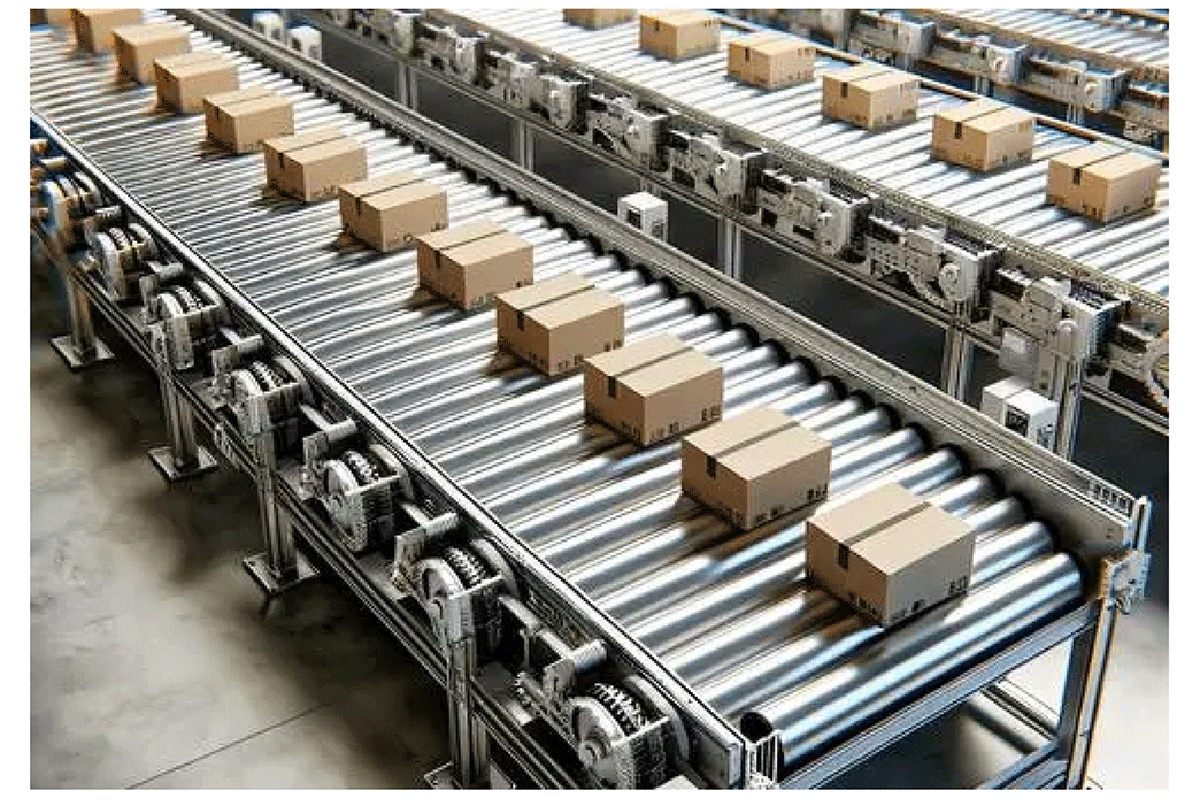
A conveyor, also known as a continuous conveyor, is a machine that can continuously transport materials along a specific route. It has a variety of functions, and can realize horizontal conveying, inclined conveying, and can flexibly form spatial conveying routes, but its conveying routes are usually fixed. At present, in order to improve the performance and operating efficiency of conveyors, many companies choose to use FRECON Electric FR500A series inverters to provide strong guarantees for the stable and efficient operation of conveyors.

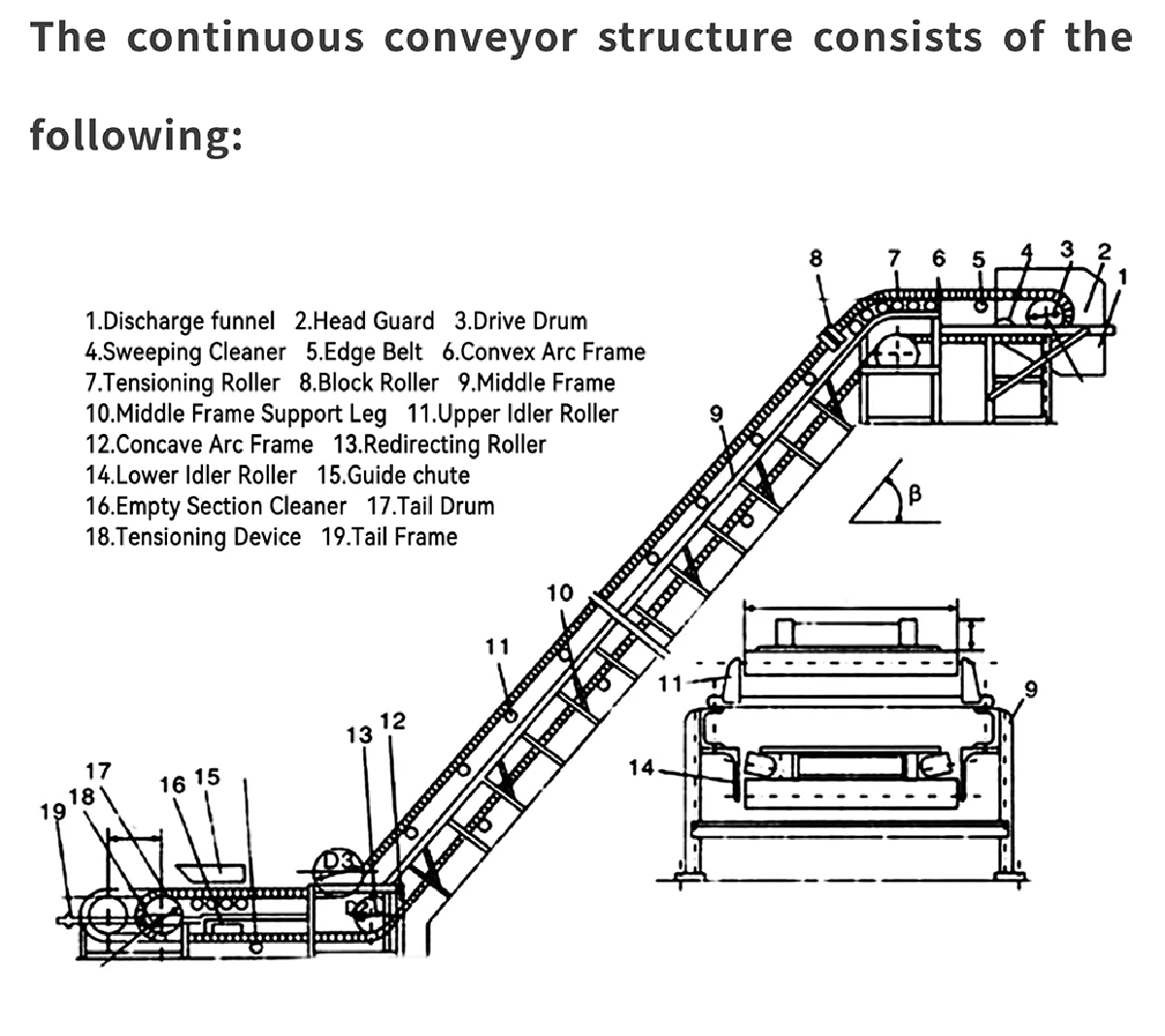
The drive device is the power source, including the motor, reducer, etc;
The conveyor belt is the core transport carrier, carrying materials
The tensioning device maintains the tension of the conveyor belt. Common tensioners include spiral and heavy hammer tensioners to prevent slipping or sagging.
Support structures such as rollers and brackets support the conveyor belt to ensure smooth operation. Redirection devices such as rollers change the direction of the conveyor belt.
Loading and unloading devices such as feed hoppers and discharge ports are responsible for loading and unloading materials.
The control system includes sensors, PLC, etc., which can adjust the speed, control start and stop, and realize safety protection.

Continuous conveyors are mostly used for horizontal and inclined material transportation, while bucket elevators and other equipment are used for vertical transportation. Some can also realize spatial transportation or cooperate with process operations. The process principle is: the driving device (motor, reducer) provides power, which is transmitted to the traction member or working component through the transmission structure (chain, roller).

In the case of flexible traction components (such as belt conveyors), materials are placed on them and transported with continuous movement; in the case of inflexible ones (such as screw conveyors), materials are transported by rotating or reciprocating working components. The line is fixed, and the redirection and guide devices ensure that the materials move along the predetermined path, the tensioning device maintains the tension, the loading and unloading device realizes the material transfer, and the control system adjusts the speed, controls the start and stop, and ensures safety.

In order to ensure safe production and reduce equipment impact, it was decided to use FRECON Electric FR500A series inverters. Considering the large error in the mechanical part, the convenient speed regulation of the inverter is used to adopt a one-to-one, dual-machine synchronous operation mode.
When the belt conveyor is running, the driving drum pulls the belt to move through friction, and the belt drives the object to move on the supporting roller by tension deformation and friction. Since the belt is an elastic energy storage material, the belt conveyor stores a large amount of potential energy when it is stopped and running.
If it is started directly, the impact is large and it is easy to cause failure. Therefore, the soft start method should be used when the belt conveyor is started, and the FR500A series inverter can meet this demand well.

The inverter model is: FR500A-4T-015G/018PB, rated power is 15kW, rated voltage is three-phase 380V-480V 50Hz/60Hz, quantity is 2 units.
The inverter main circuit is as follows:
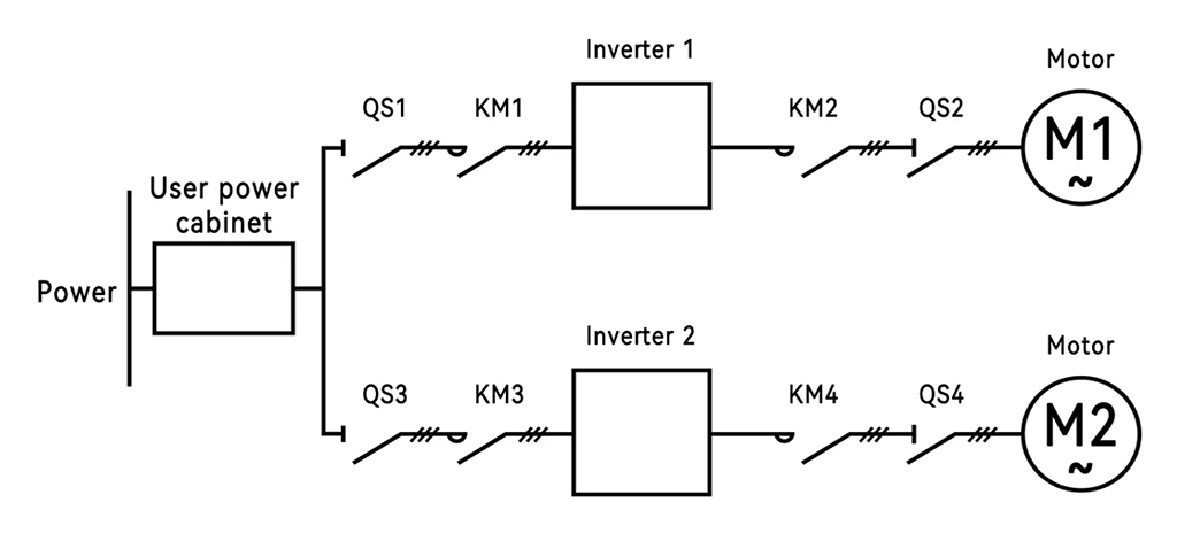
Each inverter is equipped with an isolating switch and a contactor for control
lQS is an isolating switch, KM is a contactor
lThe contactor is controlled by the host computer and PLC
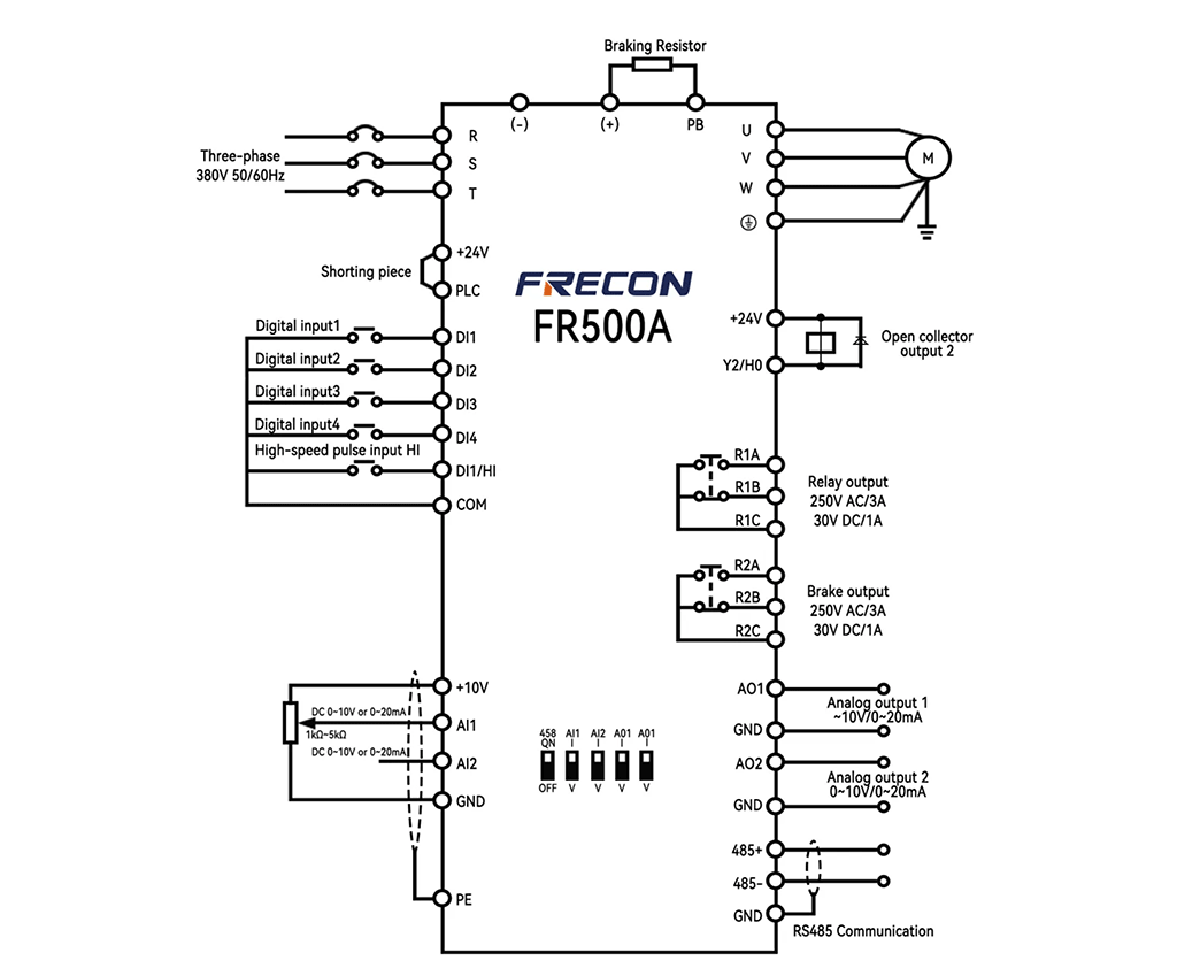

In view of the advantages of soft start, wide range of smooth speed regulation, and significant energy saving, FRECON Electric FR500A vector inverter has been running for several months with satisfactory results. After using it, the shift contactor and speed regulating resistor are eliminated, which saves maintenance costs and downtime, and increases production. Soft start and soft stop are achieved to reduce the impact of the power grid. Continuous frequency regulation makes speed regulation more convenient and reliable, and the operation is stable. It also improves the operating environment, and the energy saving effect is particularly prominent at low speeds.
